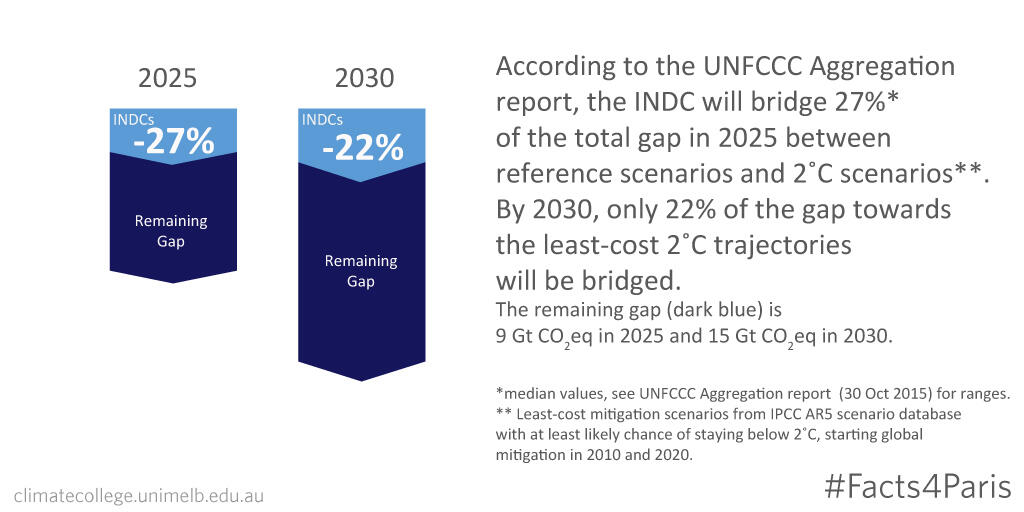Facts4Paris: Sum of INDCs bridges just 27% of current emissions gap by 2025 and 22% by 2030.

A gap exists between all reference scenarios* and 2°C scenarios**. According the UNFCCC Aggregation Report released today, the sum of INDCs bridges just 27%*** of that gap by 2025 and just 22% of the gap by 2030.
The remaining gap (in dark blue) is about 9 gigatonnes of carbon dioxide equivalent in 2025 and about 15 gigatonnes in 2030.
* Reference scenarios are those that "capture action communicated by Parties for the pre-2020 period and keep climate policies constant thereafter".
** Least-cost mitigation scenarios from IPCC AR5 scenario database with at least likely chance of staying below 2˚C, starting global mitigation in 2010 and 2020.
*** Median values, see UNFCCC Aggregation Report (30 Oct 2015) for ranges.
